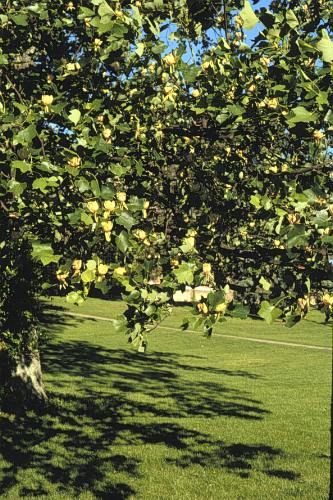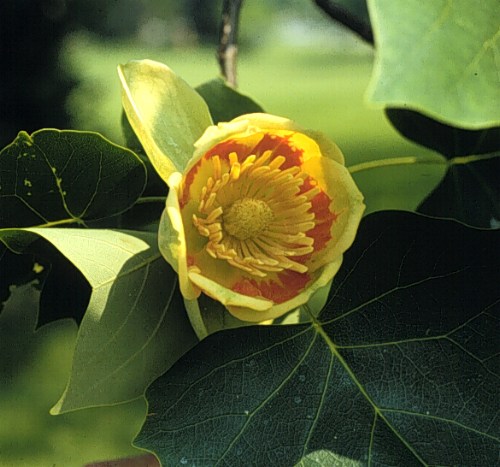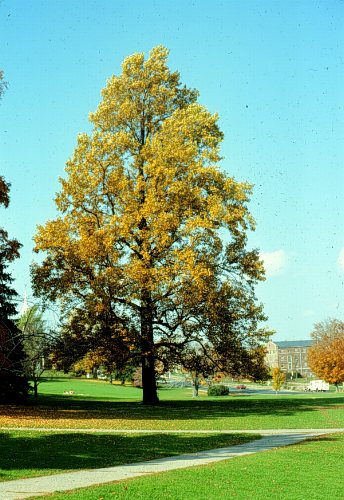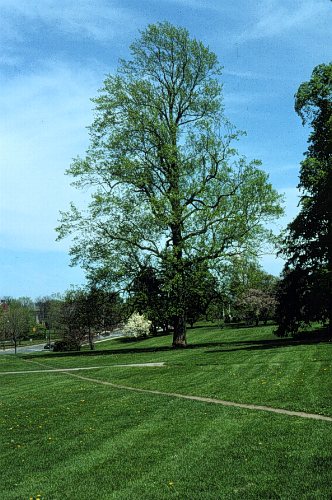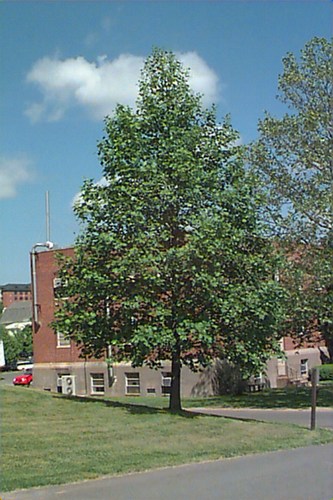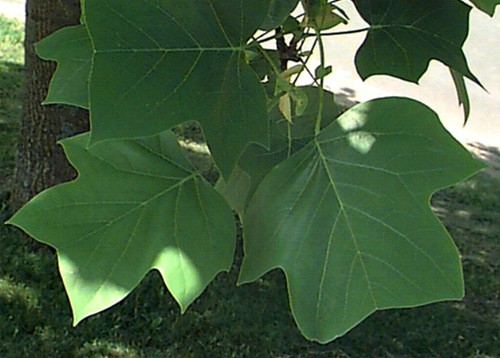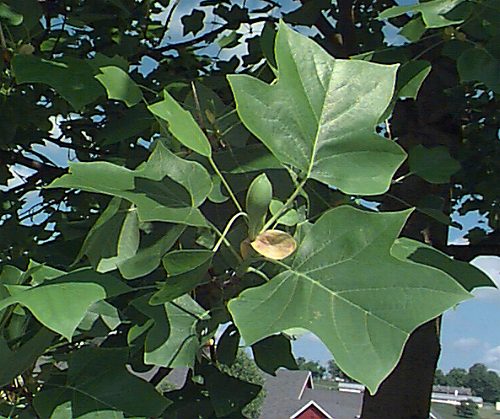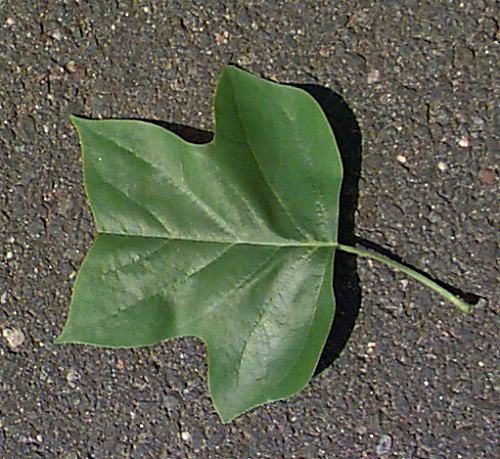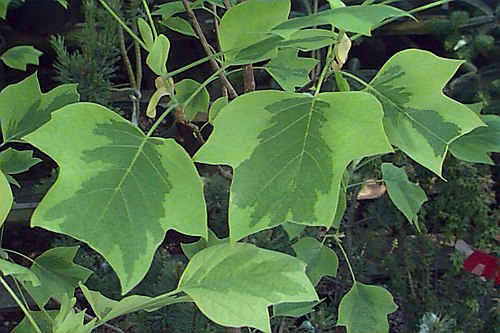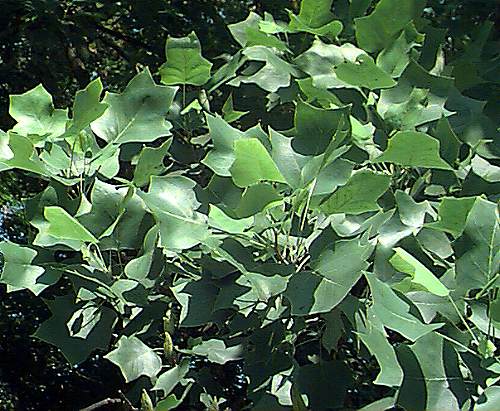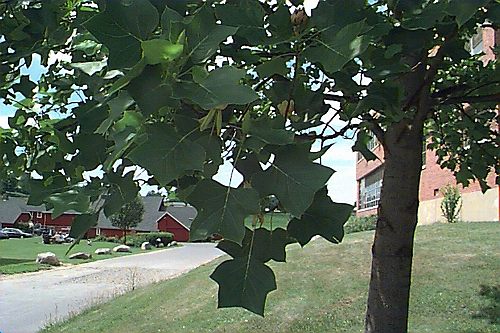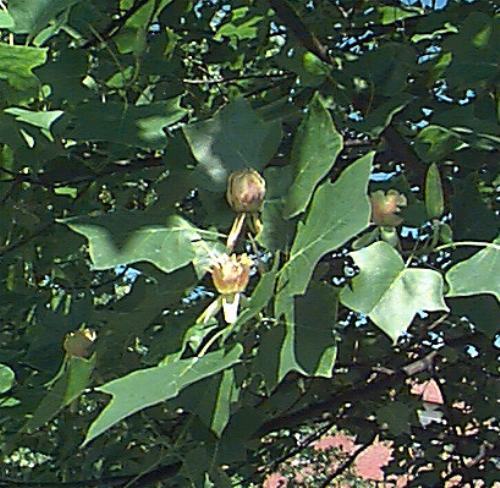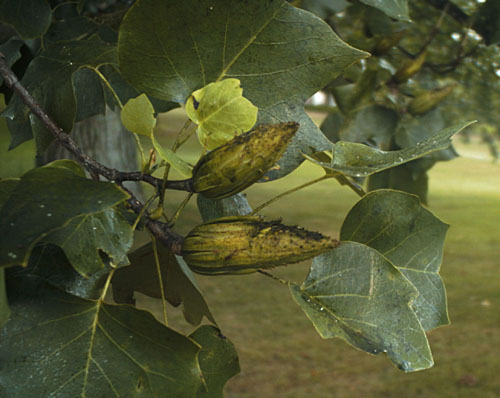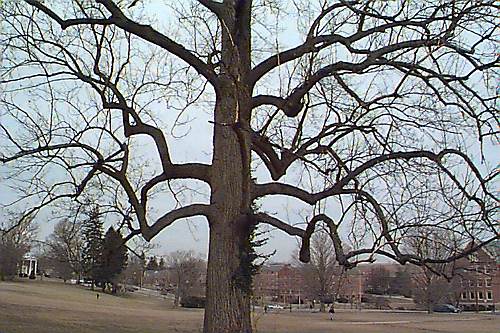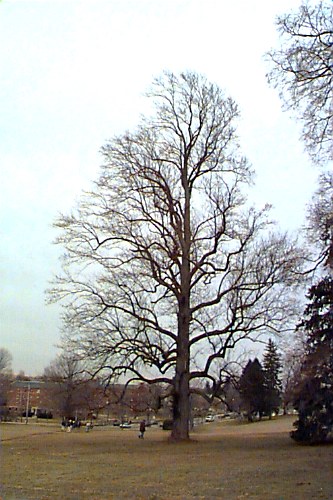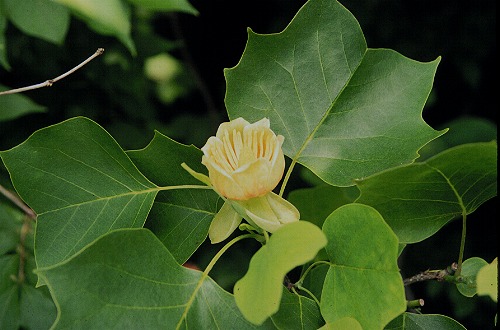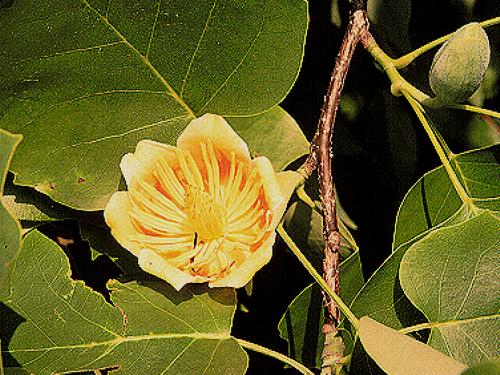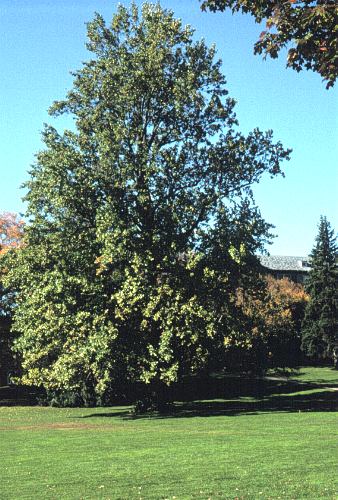Liriodendron tulipifera
Tuliptree, Tulip Poplar
Magnoliaceae
ExpandHabitat
- native to the eastern United States
- zone 5
- can be grown in zone 4 with selection of appropriate genetic material
Habit and Form
- a large, deciduous tree
- easily reaches 70' to 90' tall
- large trees to 150' or more are common
- ovate to pyramidal when young
- older trees become more irregular
- trunks of old trees often branchless for quite a distance up
- trunks are massive
Summer Foliage
- alternate deciduous leaves
- leaves have a "tulip" shape
- leaves are 5" to 8" long and wide
- color is bright green
- long petioles of 3" to 4"
- emerging leaves are folded
Autumn Foliage
- can be very showy
- golden yellow to clear yellow
Flowers
- 2" to 3" long, tulip-shaped, upright blossoms
- borne singly at branch ends
- blooms late may through mid-June
- petals are yellow-green
- the inside of the corolla base is orange
- unfortunately most flowers are borne in the higher reaches of the plant and are not easily observed
Fruit
- a cone-shaped aggregate fruit
- change from green to tan-brown in October
- persist in the winter
Bark
- gray with fine stripes of light gray in the furrows
- attractive bark, but beauty is subtle
Culture
- has a fleshy, poorly-branched root system
- prefers a deep, moist, fertile soil
- slightly acidic soil is best, but not required
- avoid very dry, hot sites
- full sun
Landscape Use
- lawn tree
- shade tree
- needs ample space due to very large size
- pyramidal shape in youth is impressive in large groups
- does not get eaten by gypsy moth
Liabilities
- extremely large size not for smaller sites
- intolerant of hot, dry sites
- aphids and associated sooty mold
- tulip tree scale
- flowers borne high in tree; do not consider as a prominent ornamental feature
- leaf spot and early partial leaf drop
ID Features
- tulip-shaped leaves
- yellow-green tulip-like flowers
- cone-like aggregate fruits
- lightly striped gray bark
- massive size of tree
- glabrous stems
- buds greenish and "mitten-shaped"
- "telescoping" stems due to encircling stipular line
Propagation
- cultivars grafted
- by seed
Cultivars/Varieties
'Ardis' and 'Compactum' - These are compact forms with smaller leaves and other features that are much reduced relative to the species. They may be useful in smaller gardens that cannot accomodate this large native tree.
'Aureomarginatum' - This is the most common variegated form, and perhaps one of the finest variegated trees available. The foliage is broadly margined with creamy-greenish yellow. The tree is hardy, grows quite large (to 80' tall) and is deemed handsome even by those observers who generally decry variegated plants. 'Mediopictum' (also known as 'Aureopictum') is a variegated form with a central yellow blotch on the foliage.
'Fastigiatum' - While rarely available commercially, this fastigiate form becomes a fine narrow tree to 60' tall with a spread of only 20'.
'Integrifolium' (also known as f. integrifolium) - A curious form, this plant bears leaves that lack lower lobes. The result is a leaf that appears almost rectangular in shape. Not at all common in gardens or nurseries.
